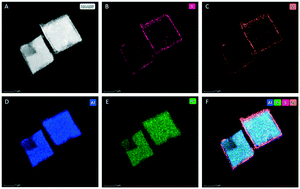Coated sulfated zirconia/SAPO-34 for the direct conversion of CO2 to light olefins†
Abstract
The conversion of CO2 to light olefins via bifunctional catalysts (i.e. metal oxides/zeolites) is a promising approach to tackle CO2 emissions and, at the same time, reduce fossil-fuel dependence by closing the carbon cycle. However, designing a catalyst, especially a zeolite, that can operate at mid-low temperatures (where the selective CO2 conversion is favored) is still a challenge for the scientific community. Herein, we report the synthesis of a novel coated ZrS/SAPO-34 in combination with an iron catalyst (Fe2O3@KO2) that successfully fills this temperature gap. While making use of the properties of the zeolite to maximize light olefin selectivity, the unique nature of the sulfated zircona (ZrS) layer allows the cracking of C5+ heavy hydrocarbons produced on the Fe component at temperatures where conventional zeolites fall short. In particular, total short olefin yields per pass over 20% at CO2 conversions near 50% (total C2–C4 olefin selectivity = 40–45) can be achieved at T = 375 °C, P = 30 bar, H2/CO2 = 3 and 5000 mL g−1 h−1. Light olefin space–time yields here reported (10.4 mmol gcat−1 h−1) clearly outperform conventional zeolite based bifunctional systems for CO2 conversion.



 Please wait while we load your content...
Please wait while we load your content...